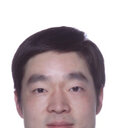[Effect of acupoint catgut-embedding therapy on changes of structure of hippocampal neurons in senile chronic stress rats].
Atslēgvārdi
Abstrakts
OBJECTIVE
To observe the effect of chronic stress stimulation on aging and the effect of acupoint catgut-embedding therapy on structural changes of hippocampal pyramidal neurons in senile chronic stress rats, so as to reveal its mechanisms underlying resisting senility.
METHODS
Forty-eight male SD rats were randomly divided into normal control, senility model, senility + stress and senility + stress + catgut-embedding (catgut-embedding) groups (n = 12 in each group). Senility model was established by intraperitoneal injection of D-galactose liquor, once daily for 8 weeks; and chronic stress was produced by restricting the rat in an inmovable cylinder for 1-4 h progressively, once daily for 4 weeks. Catgut embedment (0.4-0.6 cm in length) was applied to "Baihui" (GV 20) and "Shenshu" (BL 23), "Neiguan" (PC 6) and "Ganshu" (BL 18) alternatively by using a surgical needle, once a week, 8 weeks altogether. The brain tissue containing hippocampus was cut into sections to be stained with H.E. technique, and the number of the hippocampal pyramidal neurons of CA 3 region was counted under optical microscope. The ultrastructure of pyramidal neurons in the left CA 3 region of the hippocampus was observed by electron microscope (2 rats for each group).
RESULTS
Compared with the normal control group, the numbers of hippocampal pyramidal neurons in the senility model group and senility + stress group were remarkably decreased (P < 0.05, P < 0.01). The number of pyramidal neurons was obviously fewer in the senility + stress group than in the senility model group (P < 0.01). In comparison with the senility + stress group, the number of pyramidal neurons in the catgut-embedding group was considerably increased (P < 0.01). Results of optical microscope showed that the pyramidal cells were sparse in the senility model and very sparse in the senility + stress group, and relatively richer in the catgut-embedding group. Findings of the electron microscope displayed that the pyramidal neurons presented an injured state including shrank soma, pyknosis of the cellular nucleus, atrophia of nucleoli, onglobation of intranuclear caryotin, decreased glycogen granules, etc. in the senility model group, and an extremely irregular shape, partial apoptosis, severer pyknosis of the cellular nucleus, more edema blank regions, etc. in the senility + stress group. These situations of pyramidal cells in the hippocampal CA 3 region were relatively milder in the catgut-embedding group.
CONCLUSIONS
Chronic stress may aggravate the damage of hippocampal pyramidal neurons in senile rats, which can be improved by catgut-embedding therapy.


